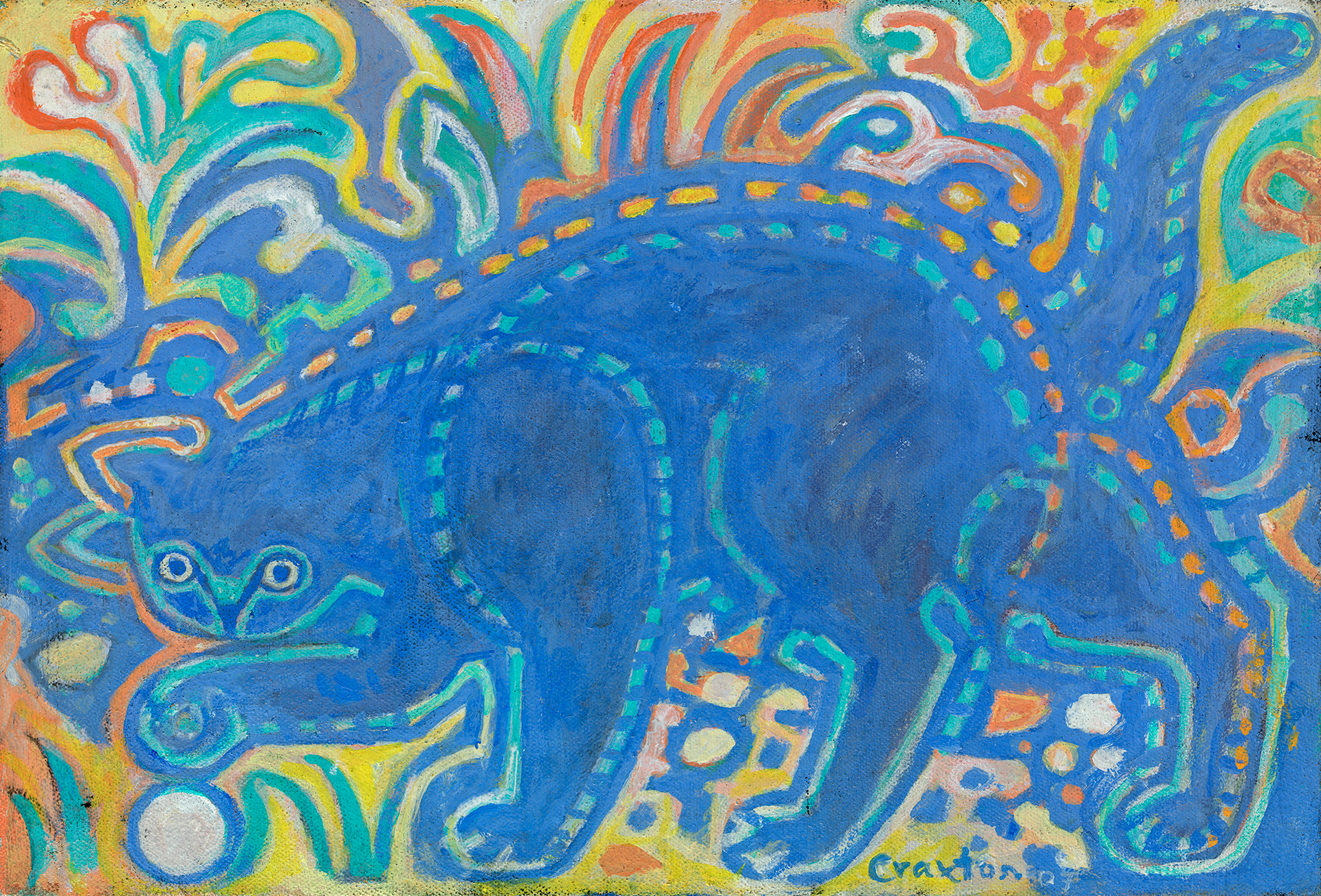The other day, I opened my front door, and a cat from up the street was sitting alone on my porch — a strange creature, just looking. Not everyone loves cats. Me, I think them charming because they are essentially wild creatures with alien intelligences that are small enough to live with.
John Craxton — a figurative painter, gay man, one-time friend of Lucian Freud, and English philhellene who passed away in 2009 — was a fellow cat-appreciator who painted them throughout his life. He found that felines were the perfect models: Give them a little bit of fish and they’d pose. He would see the animal mid-action and think, that’s another picture.


In Craxton’s Cats (2024), written by Andrew Lambirth, we find shy cats and aggressive cats; dancing cats, happy and angry cats; cats asleep and cats fighting with other cats; cats with birds, with mice, and of course, with fish. His “Confrontational Cats” (1977), in which their two bodies are merged in a scrawl of dense black lines, is a small masterpiece, as is “Cats on a Ladder” (1984), in which one seems to help the other up. Craxton, like some cat-lovers, was an odd fellow: He was known to concoct bad puns in his invented language, “Anglo-Craxton,” calling painter’s block, for instance, “procraxtonation.” So, of course, we find a panoply of strange cats: In “Marmalade Cat in Mirror” (1994–95), for instance, an orange-and-green spotted cat paws at itself in the mirror, only one eye visible. You might call the book a cat-alogue of Craxton’s subjects.



In The Order of Things: An Archeology of Human Sciences (1966), the French historian and philosopher Michel Foucault quotes Jorge Louis Borges’s non-standard classification of different kinds of animals: “belonging to the Emperor, embalmed, tame, sucking pigs, sirens, fabulous …. [animals] that from a long way off look like flies.” Categories of classification matter, Foucault argues, because they organize thinking. Craxton’s Cats, therefore, suggests a defamiliarization of art history. Typical art historical writing hones in on visual analysis of specific works to place them within a social context, sometimes drawing on the artist’s personality. By centering just one subject, Craxton’s Cats offers a new way into the artist’s oeuvre — as well as invites viewers to share in his obsession.



Perhaps Craxton’s Cats will inaugurate a sequence of innovative studies: Théodore Gericault’s horses, Gustave Courbet’s dogs, and Jean Siméon Chardin’s monkeys. A history of Modernism told through felines would have to discuss the black cat in Edouard Manet’s “Olympia” (1863), the seductive cats of Balthus, Andy Warhol’s screenprinted cats, George Herriman’s Krazy Kat (1913–44) — and, of course, Craxton’s cats.



Craxton’s Cats (2024), written by Andrew Lambirth and published by Thames & Hudson, is available for purchase online and in bookstores.

